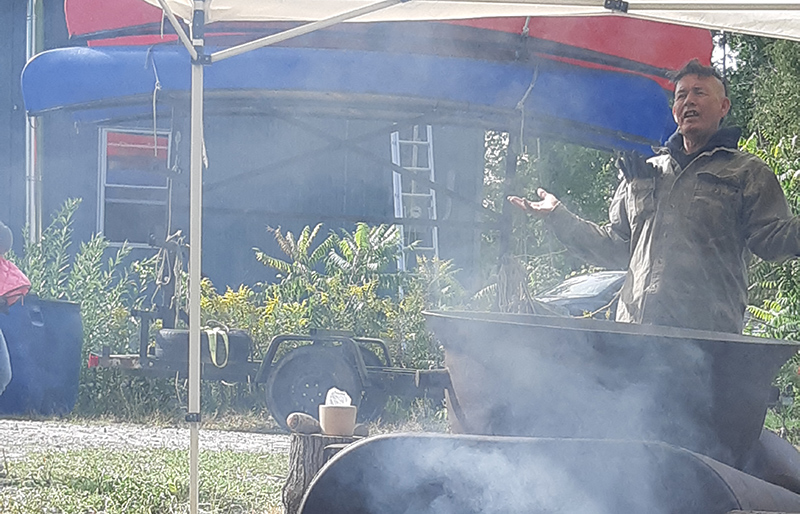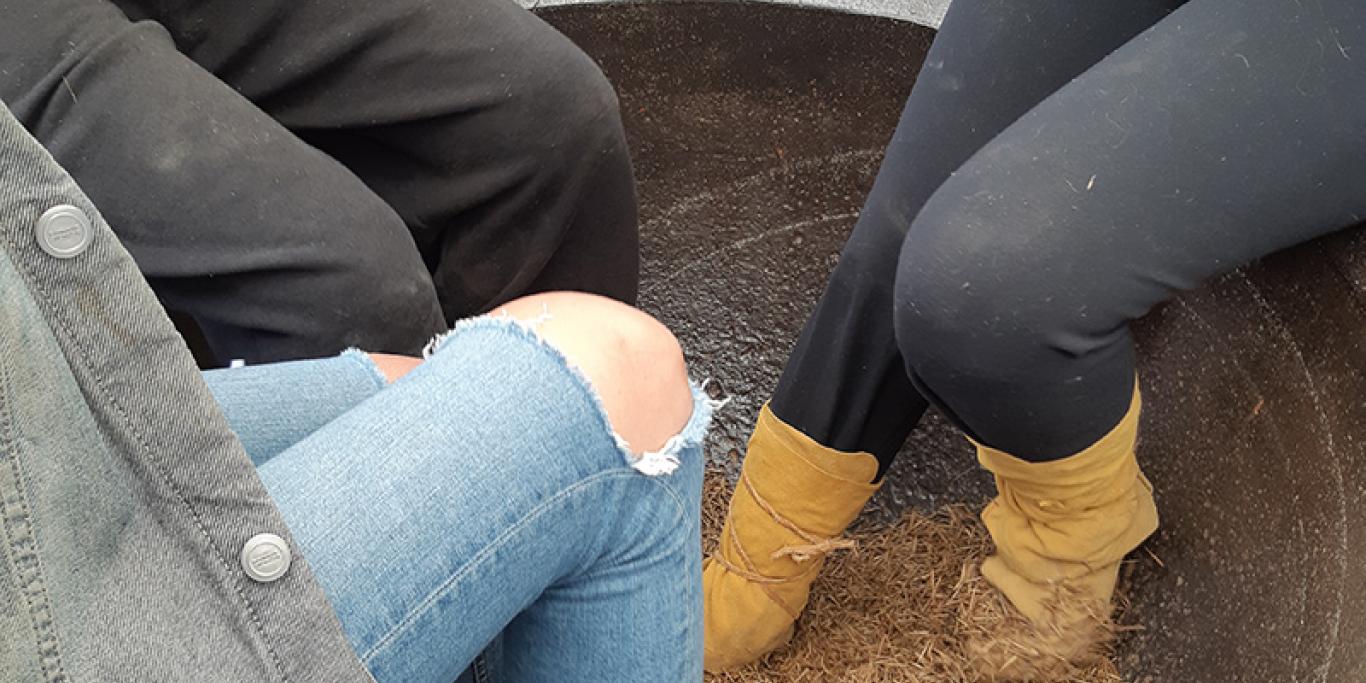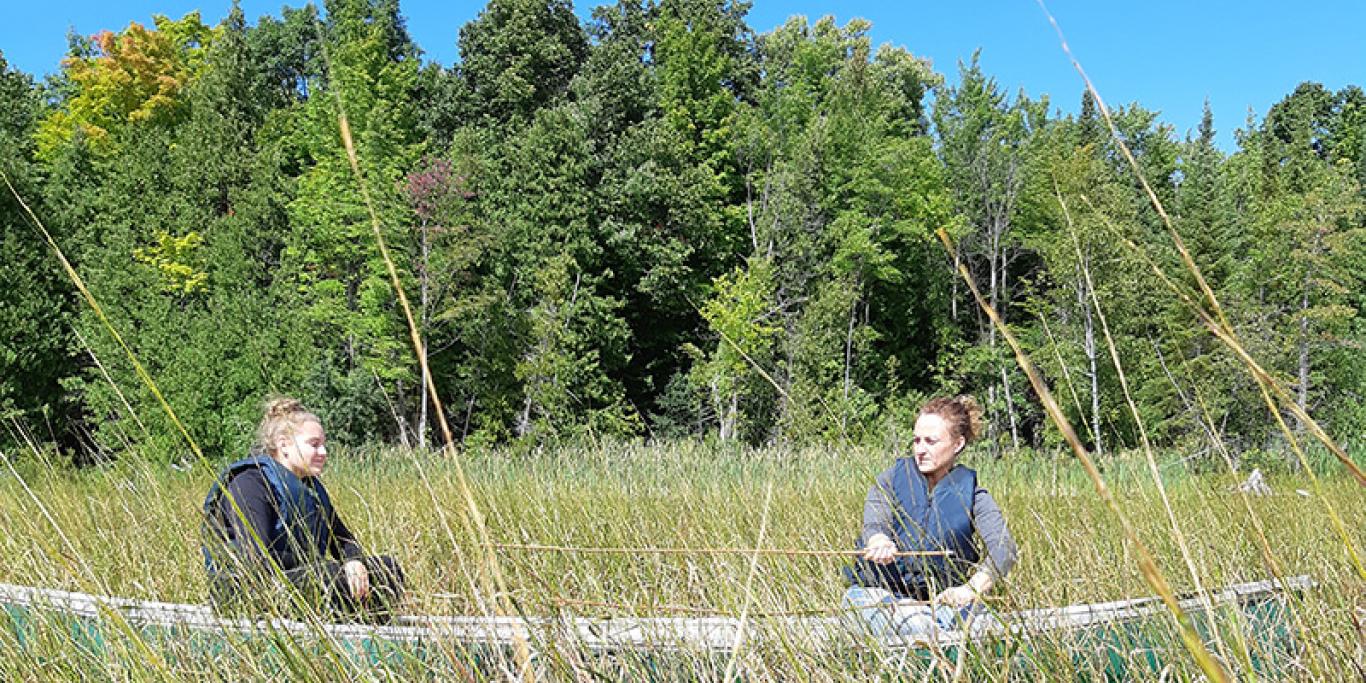
A varied group of settlers, youth, artists, and newcomers came together to learn about the history of wild rice, and the process that turns these little black seeds into a cultural staple food. We joined Black Duck Wild Rice’s James Whetung and his daughter Daemin for a hands-on lesson in traditional wild rice harvesting methods on Saturday September 8th at Chemong Lake.
Seated in a circle, holding tobacco in our hands, smoke rising from the fire, James explained that the Anishinaabe migrated west from the east coast in search of “the place where food grows on the water,” as directed by the Seven Fires Prophecy, ultimately discovering wild rice in this region. In Anishinaabemowin, wild rice is known as manoomin, which translates to “the good seed”. Daemin later told me that her brother’s name is Manoomin, further marking the plant’s significance for the family and their people.
When settlers disrupted the waterways with the construction of the Trent-Severn, the conditions for growing wild rice were negatively impacted, the plant requiring shallow waters to thrive. It was with seed from the Ardoch First Nation that the Whetung family was eventually able to revitalize this important food source locally.
However, this renaissance of manoomin has come with challenges. Pigeon Lake, the primary source of Black Duck Wild Rice, is surrounded by cottagers who have failed to understand the significance of the crop to the Curve Lake First Nation. At one point, Parks Canada permitted the cottagers to remove the plants, without fulfilling their duty to consult First Nations, undoing years of work to reseed the area.
When I asked Daemin why they would invite settlers into such a sacred part of their culture, she told me that they need the support. The conflict has motivated James and Daemin to open up their home on Chemong Lake in order to foster greater understanding among the broader community.

After sharing the history with us, they walked us through the steps involved in processing the plant, from roasting, to “dancing” the rice, and finally winnowing away the chaff. Once we had taken turns stirring the roasting rice with a paddle, several among our group donned moccasins and climbed into the kettle to dance the rice. This step seemed simple enough, but requires technique to do properly and efficiently, as well as a shared rhythm. It is no surprise that this dancing is often accompanied by traditional songs. Finally, the rice, now separated from but intermingled with the husk, was placed on a sheet which we used to toss it up in the air. While suspended, the wind whisks away the chaff, leaving the rice on the sheet, ready to be collected and cooked. James has adapted many of these traditional methods to the modern world, with machines he designed himself so that he can process the rice on a greater scale and share this resource with the surrounding communities.

At last we got to the part of the trip I was most looking forward to: canoeing through the rice! Daemin recruited me and some others to remove the many canoes from their rack, and off we went to see the food that grows on the water. Two long sticks are used, one to bend the plants over the canoe, and the other to tap them so that the seeds “shatter” from them and into the hull of the boat. From the front of our canoe, I did my best to steer through the rice without uprooting it, a difficult task to say the least when you’re right in amongst the long grasses.
When we returned with our small hauls of manoomin, Daemin had us sweep every last grain into piles in the canoes with our hands, and then deposit those piles in the single bag that collectively we managed to fill. It struck me how committed she was to making sure we didn’t miss a single seed. Collecting the rice is such a painstaking endeavour, and with many of the steps you run the risk of losing grains, so every little bit is highly valued.
We left Chemong Lake with a memorable shared experience, and a greater understanding of indigenous food sovereignty. Our thanks goes out to the Whetung family for giving us this opportunity to bring people together around a vital local food source.








